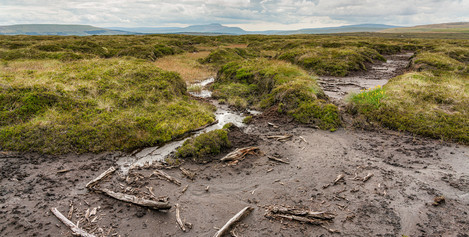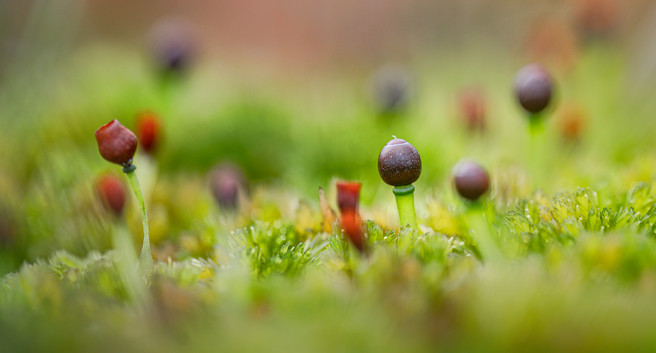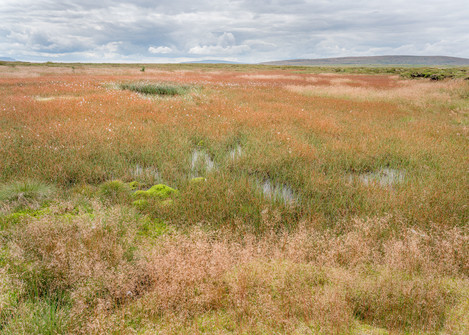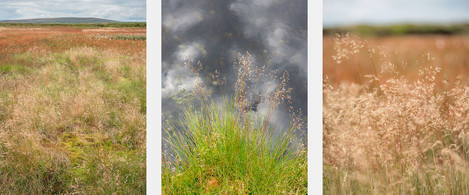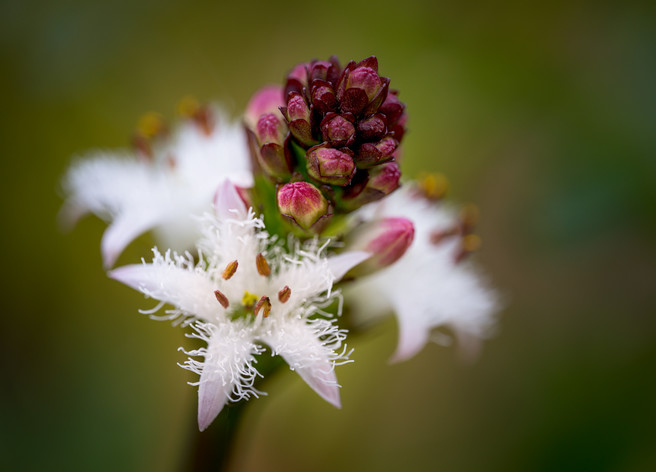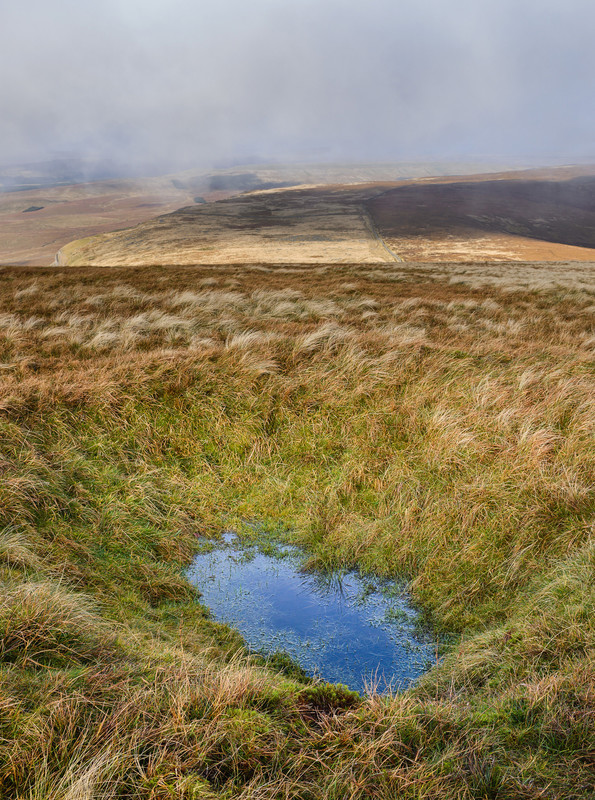Yorkshire’s peatlands

Lizzie Shepherd
Lizzie is a full time professional photographer based in North Yorkshire, specialising in landscape, nature and travel photography. She writes for a number of magazines and runs small group photography workshops. Lizzie’s work is on display at the Joe Cornish Galleries in Northallerton and she has also taken part in a number of different events and exhibitions in the UK. She loves nothing more than being outside, photographing the landscape and looks to find ways of capturing some of our more hidden scenes, hoping to show the beauty and intrigue of the world around us.
Last spring, Yorkshire Wildlife Trust launched a striking marketing and fundraising campaign: Give Peat a Chance. Although a member of YWT for many years, I have to confess the relevant mailer lay hidden under a pile of other post in my kitchen for some weeks and it was actually the social media side of the campaign and, specifically, a number of powerfully worded tweets that first grabbed my attention.
There were the references to Yorkshire’s peatlands being akin to the Amazon rainforest, there was hard hitting aerial footage showing the bleak and silty wasteland that covers extensive areas of our peaty uplands. Most striking from my point of view, however, was to learn that globally, peatlands are the largest store of carbon on land. I had no idea.
Perhaps that’s ignorance on my part but I suspect I was not alone in focusing all my attention on trees, trees and more trees. Woodland is of course hugely important, and it’s one of my favourite environments in which to wander and photograph, but it is just one of many invaluable habitats. Peat bogs probably don’t rate so highly in the glamour stakes but, the more I read, the more I learnt just how vital they are. In particular, I was blown away by two statistics:
Although peatlands only cover 3% of the world’s surface, they store 30% of the soil’s carbon - twice as much carbon as all of the forests in the world.
The UK’s peatlands store over 3 billion tonnes of carbon – that’s roughly the same amount as all the forests in the UK, France and Germany combined.
These are seriously powerful facts and were the catalyst for me to do what I’d been meaning to do for a while – start to give something back to the landscape I love. Better late than never, so last year I donated 5% of my Yorkshire based workshop profits to Give Peat a Chance.
It was as a result of this and subsequent conversations that led me to spend a fascinating day last summer with Lyndon and Jenny from Yorkshire Peat Partnership. For the best part of six hours we wandered around Fleet Moss – once covered in a rich peatland habitat, but now much of it is a desolate landscape, in parts resembling a First World War battlefield. It’s the worst peatland site the partnership has discovered in the Yorkshire Dales and as such, it’s one of the areas being prioritised for restoration on a massive scale.
There are a number of reasons why sites like Fleet Moss are in such a bad state but the major contributing factor is almost certainly the agricultural policy of over 50 years ago when farmers were encouraged to drain boggy sites to improve the land for grazing. The policy was well intentioned and it is only in more recent times that this has been shown to be misguided and extremely damaging.
The resulting ditches, or grips as they are known, are mostly devoid of vegetation and only serve to increase erosion. There is also a thought that an ancient boundary marker has exacerbated this problem on Fleet Moss, with a likely congregation of both human and livestock footfall along this area. As a result, a significant area of the moor is covered in hags – mounds of peat raised high above the surrounding channels and ditches.
These channels and ditches simply aid the flow of water off the moor and cause massive problems in the dales below. Extreme weather is part of the issue but the extent of flooding is exacerbated by the inability of the uplands to provide the kind of natural flood defences of which it is capable. The problem can also be seen in the likes of Semer Water and the Wharfe, with staining and silt from the peat. Peaty water must be filtered before it can be safely treated to become drinking water. This is an expensive procedure and the cost is, of course, passed on to us, the customers.
A number of different factors have contributed to large areas of the moor being worn down to bare peat and, in places, even down to the rocky mineral layer below the peat. Some of the channels are several feet deep and work has started to begin to shore these up. Hundreds of coir logs are used in this process, with hundreds more to be flown in this winter. The beneficial effects of these are evident, with vegetation already starting to grow back in some areas. Cotton grass plug plants have also been introduced and it was encouraging to see these starting to sprout new and healthy growth.
It was interesting to see the range of other plants growing on Fleet Moss and to understand their place, or otherwise, in this habitat. Of course, Sphagnum moss (and there are countless varieties) is one of the most important plants you will see growing in a peat bog. Apparently, the plants hold over 20 times their weight in water! Much of the Sphagnum moss was dry and yellow, having been deprived of the water on which it thrives. Conversely, star moss typically thrives in a drier environment and is something you would not wish to see growing in abundance on Fleet Moss.
By the same token, it was not a good sign that we saw a patch of harebells growing in one area – I tend to think any native wildflower must be good – but of course, they are all associated with particular environments. Other plants that thrive in peat bog are crowberry (not a plant I knew other than by name), bilberry and, much to my surprise, cloudberry. I had eaten cloudberries in Norway a few years back and had no idea they grew in the Yorkshire Dales – sadly we saw no berries, only leaves – but it was great to learn they exist here.
We also saw masses of bog asphodel – I don’t recall ever seeing such a spread – so this was encouraging and perhaps shows what is possible. Likewise, we saw an abundance of Deschampsia grasses – a favourite of mine to photograph. I was also shown a wonderful clump of sundew plants – again, I don’t recall ever seeing so many in one small area.
There were clumps of heather but nothing widespread and, although we photographers tend to enjoy photographing endless carpets of heather, blanket bog covered primarily in heather is not a good thing. Biodiversity and balance are key.
Of course, it’s not just about the plants. Wildlife thrives on healthy peatland and, even in its degraded state, Fleet Moss is home to countless insects, as well as short-eared owls, golden plover, curlew and many other birds. It was wonderful to see and hear many of these during the day. Perhaps most exciting was to be taken to a wonderful little oasis in the middle of Fleet Moss – a saturated area of mosses and grasses, very wet an example of what more of the area can and, in time, will look like again.
It’s also great to see other restorative work going on in Yorkshire – for example, the National Trust is currently repairing the raised bog at Malham Tarn Moss. It’s another area I love to photograph and is home to one of our most exotic flowers – Bogbean.
I’m aware my account of my day with YPP and of the work that is going on is necessarily simplified, I’m sure I’ve made a few too many generalisations and there are things I’ve not even touched upon. However, I hope I may have helped to open a few eyes, in the same way, mine was opened when I first became aware of the true value of peat. As well as continuing to contribute to the ongoing work, I hope to find ways in which my photography can perhaps shed a little bit of light on the hidden charms of the peat bog. It will be a challenge, but I’ll give it a go!
Further reading
There are some excellent articles online, where you can read more about the work going on and about why this kind of conservation is so very important. I’ve included links to just a few of these at the bottom of the page.
https://www.ywt.org.uk/give-peat-a-chance
https://blog.yorkshiredales.org.uk/restoring-the-amazon-of-the-yorkshire-dales/
https://www.yppartnership.org.uk
https://www.ukhillwalking.com/articles/opinions/give_peat_a_chance-11854
https://www.nationaltrust.org.uk/features/whats-so-special-about-peat
Get in touch
In March 2019, Joe Cornish wrote an article around 'Does being an outdoor photographer inevitably lead to environmentalism?
and asked 'Do we have a Voice? And does being an outdoor photographer inevitably lead to environmentalism? And if so, what if anything are our responsibilities?'
"If you want to share your ideas or suggestions, or feel you could write or contribute a piece on what we as a community can do collectively to help the causes of landscape, ecosystems and the wild world then please do contact Tim (via the contact page), who is keen to spotlight what has become the issue of our time. And how we might use our photography to best highlight the importance of nature, with joy, irony, anger, sadness or humour…whatever that voice may be."


